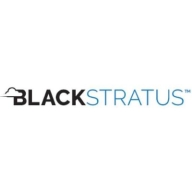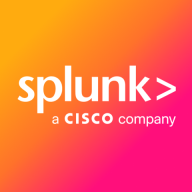

Splunk Enterprise Security and SIEMStorm are competing products in the security information and event management field. Splunk Enterprise Security holds a slight advantage due to its robust feature set and analytical capabilities, although SIEMStorm is more cost-effective.
Features: Splunk Enterprise Security provides advanced threat detection, comprehensive data analytics, and real-time monitoring. It effectively handles vast amounts of data. SIEMStorm integrates intuitive threat intelligence and offers rapid incident response.
Ease of Deployment and Customer Service: Splunk Enterprise Security requires sophisticated deployment and a dedicated support infrastructure, potentially challenging for those lacking technical expertise. SIEMStorm offers straightforward deployment and responsive customer service, suitable for organizations with limited technical resources.
Pricing and ROI: Splunk Enterprise Security has higher setup costs but delivers substantial ROI with its capabilities and scalability. SIEMStorm is more affordable upfront, providing solid ROI but may need extra investments for advanced features.
| Product | Market Share (%) |
|---|---|
| Splunk Enterprise Security | 9.2% |
| SIEMStorm | 0.3% |
| Other | 90.5% |

| Company Size | Count |
|---|---|
| Small Business | 110 |
| Midsize Enterprise | 50 |
| Large Enterprise | 257 |
SIEMStorm is our premier network security solution for cloud service providers and other MSSPs. A single appliance gives you flexible threat visualization and mitigation tools across distributed networks and other multi-tenant environments. Easy to set up right out of the box, SIEMStorm integrates with your existing network and security hardware to provide the following advanced features:
Advanced architecture with full failover and n-tier redundancy to meet complex regulatory compliance, business continuity and risk management needs
Multi-tenancy support to segregate customer accounts and silo files and applications for privacy and data integrity
Real-time attack visualization to identify zero-day attacks using sophisticated metrics based on rules-based, vulnerability, statistical and historical correlations
Vulnerability correlation to integrate data from CVE-compliant intrusion detection systems, eliminating false positives and freeing up your team to focus on real threats
Unparalleled visibility in distributed networks to correlate activity in individual customer environments, identifying hidden threats, suspicious trends and other potentially dangerous behavior
Sophisticated reporting tools for ISO, PCI, HIPAA, SOX and other compliance standards
Splunk Enterprise Security delivers powerful log management, rapid searches, and intuitive dashboards, enhancing real-time analytics and security measures. Its advanced machine learning and wide system compatibility streamline threat detection and incident response across diverse IT environments.
Splunk Enterprise Security stands out in security operations with robust features like comprehensive threat intelligence and seamless data integration. Its real-time analytics and customizable queries enable proactive threat analysis and efficient incident response. Integration with multiple third-party feeds allows detailed threat correlation and streamlined data visualization. Users find the intuitive UI and broad compatibility support efficient threat detection while reducing false positives. Despite its strengths, areas such as visualization capabilities and integration processes with cloud environments need enhancement. Users face a high learning curve, and improvements in automation, AI, documentation, and training are desired to maximize its potential.
What Are the Key Features of Splunk Enterprise Security?In specific industries like finance and healthcare, Splunk Enterprise Security is instrumental for log aggregation, SIEM functionalities, and compliance monitoring. Companies leverage its capabilities for proactive threat analysis and response, ensuring comprehensive security monitoring and integration with various tools for heightened operational intelligence.
We monitor all Security Information and Event Management (SIEM) reviews to prevent fraudulent reviews and keep review quality high. We do not post reviews by company employees or direct competitors. We validate each review for authenticity via cross-reference with LinkedIn, and personal follow-up with the reviewer when necessary.